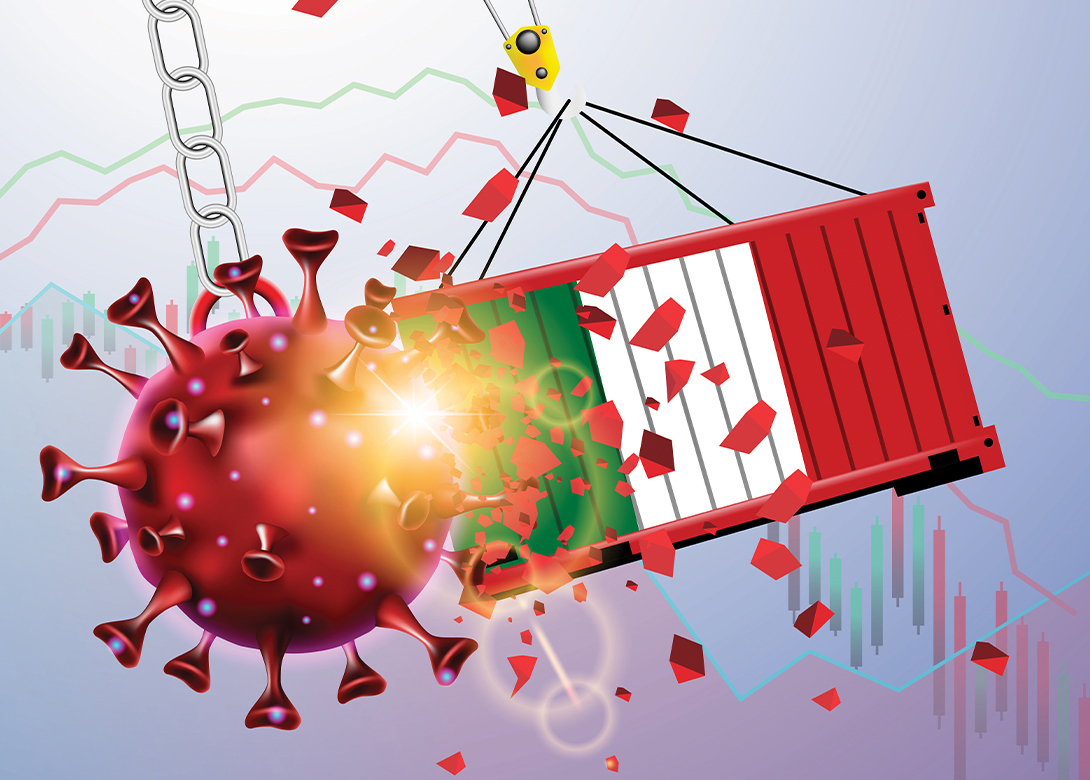

By Marco A. Guerritore, editor in chief, Italian Fasteners Magazine
Poor Italy! It was one of the first EU countries to have to face and deal with the pandemic triggered by the coronavirus. The healthcare sector mobilised quickly and decisively and now we can confirm that this country survived the emergency with dignity.
Unfortunately, Covid-19 is a sneaky illness that appears, disappears and then reappears. So you can’t let your guard down. Evidently complying with healthcare regulations clashes with economic needs, hence the combination of the pandemic and lockdown has had a negative impact on manufacturing – resulting in a halt in development of all commodity sectors.
The wealth produced in Italy in the second quarter of 2020 decreased €50 billion compared to the first quarter of 2020 thus dropping from €406 billion to €356 billion. GDP (Gross Domestic Product) dropped 12.4%, an unprecedented figure in the history of ISTAT (Italian National Institute of Statistics).
However, the decrease in Italian wealth, based on statistical comparisons, is in-line with Eurozone figures (-13.8% for France, -18.5% for Spain, -16.5% for Portugal and -10.1% for Germany). To limit the detrimental effects of this difficult economic phase, the Italian government examined a series of measures aimed at stimulating spending and thus providing a new boost for the country’s economy. They are scheduled to be implemented shortly.
The current economic picture is also a source of concern for the Centro Studi of Confindustria (the Association of private Italian companies), which cites a drop of 19.2% in industrial production in the second quarter of this year; and the obligation to take into account an acquired change of GDP for 2020 (i.e. the wealth produced at the end of the year with no changes in the coming quarters), which shows a slowdown of 14.3%.
However, more recent Confindustria forecasts partly adjust this pessimistic picture and show a possible gradual recovery of manufacturing activity in the near future. The manufacturing figures for the month of June are already positive, with an increase totalling 2.3% and an additional 7.5% is forecast for July.
By analysing the production trend, Confindustria experts predict that after the negative fall of the second quarter of 2020, there will be a comeback in the third quarter.
How has the Italian fastener sector been impacted by the pandemic?
“The lockdown took place,” according to Vittoriano Calomeni, general manager of Bontempi VIBO SpA – specialised in manufacturing technological screws and bolts, “at a time when the market was reacting to months of stagnation, which had mainly characterised the second part of 2019. Thus there was a shutdown right at a very positive time in terms of incoming orders and daily sales.”
The lockdown enforced by the authorities in the early months of 2020, just like for all other manufacturing businesses, meant a complete shutdown for all fastener sector companies, and partial for only a few companies, with the consequence a serious drop in company revenue.
Luca Panzeri, CEO of PANZERI SpA, a washer manufacturer, estimates the decrease in July 2020 sales to be 35% compared to the same period of the previous year. This figure is mainly influenced by the negative trend in the automotive industry, which is currently facing multiple difficulties, including the pressing demand for vehicles that are more and more ecological and better performing. All of this promotes a climate of uncertainty among buyers who see an unclear future for internal combustion engines and tendency to favour hybrids, electric or hydrogen engines. When looking at the annual values, at present Luca Panzeri’s estimates are that 2020 revenue should decrease by 25% compared to the previous year.
“The recovery after the lockdown,” Vittoriano Calomeni explained, “will be a very slow process. On one hand, orders are not being cancelled currently, but on the other there has been a slowdown in the placement of new orders due to numerous factors: Number one being the crisis of the automotive sector and OEMs in general; the decision to destock by the main European distributors; and high volume of goods from the Far East.”
The forecasts of industry operators for post Covid-19 are contrasting, some are optimistic and believe that there will be a recovery of sales to pre Covid-19 levels in 2021, others think this will not happen before 2022. However, to improve the current difficult situation the intervention of national and European institutions will be indispensable.
“It would be nice,” Vittoriano Calomeni emphasised, “if at the Italian and European level there was greater focus on companies that need to find support in industrial policies aimed at investments and creation of new jobs.”

Will joined Fastener + Fixing Magazine in 2007 and over the last 15 years has experienced every facet of the fastener sector - interviewing key figures within the industry and visiting leading companies and exhibitions around the globe.
Will manages the content strategy across all platforms and is the guardian for the high editorial standards that the Magazine is renowned.
Don't have an account? Sign Up
Signing up to Fastener + Fixing Magazine enables you to manage your account details.